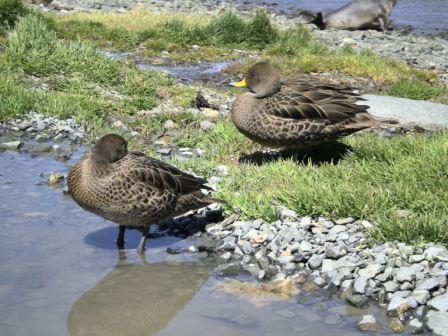South Georgia Pintail

In 1775 when James Cook landed on the Island he noted the endemic South Georgia Pintail pictured above. I took this along the track to Grytviken – there are over 2000 living on the island. They are found on the northern coast and the western third of the south coast the rest of the south coast doesn’t have a topography that encourages them. They are found in the many freshwater pools and streams fringed by tussock grassland in seal wallows and poorly drained land next to wetlands and melting snow, as well as on the coast.
They are omnivores feeding on vegetation (marine and freshwater algae), foraging in the intertidal zone for invertebrates (freshwater shrimp, clams, nematodes, snails) and sometimes they even scavenge at seal carcasses like skuas or giant petrels.
They breed in solitary pairs (mate for life) with nests hidden in the tussock grass during a long breeding season from late October to early March. Cleverly when returning to the nest they land away from it getting to it by creeping through the undergrowth so as not to encourage predatory birds. The eggs are small pale cinnamon pink eggs and they lay between 3 to 5. The introduced rats do eat their eggs along with the skuas.

